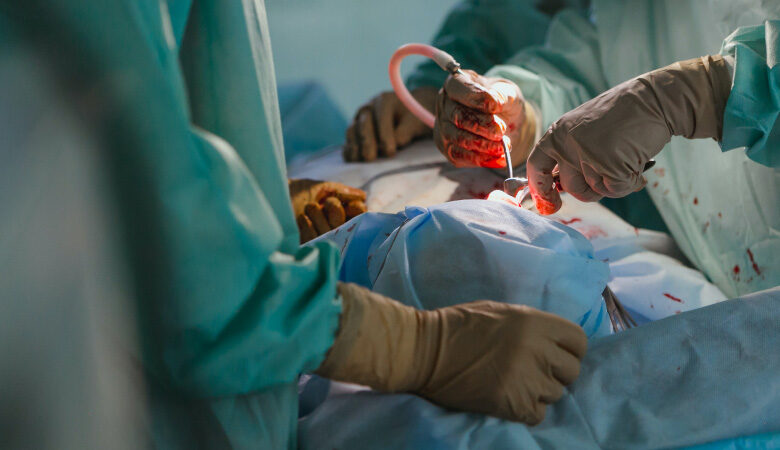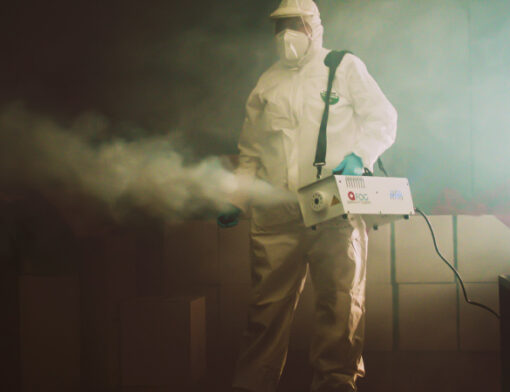What are antiseptic solutions and why they matter to hospitals

Antiseptic solutions are key to combat hospital infections, one of the main scourges facing healthcare. And it is not just developing economies struggling with this issue- in OEDCE countries, about 4 million people a year fall victim to infections in hospitals. In the EU alone, over 90,000 annual deaths are directly related to this problem, which represents an average of 6% of hospitals’ budgets.
Find out what antiseptic solutions are exactly and to what extent they help mitigate the risk of infections in hospitals.
What are antiseptic solutions?
Antiseptic solutions are medicines. Like any medicine, its aim is to reduce, eliminate, or inactivate microorganisms in living tissues. Although often associated with disinfectants, which work only on inert surfaces, antiseptic solutions apply exclusively to living tissues, such as a human body.
Antiseptic solutions can work either via inhibition or lethality. In other words, they might simply prevent the growth of microorganisms or go further and kill bacteria, viruses and fungi. Either way, antisepsis, the process of using antiseptic solutions, requires surfaces to have been previously cleaned, rinsed and dried – making this an essential first step.
Some antiseptics bring these two actions together simultaneously, combining speed and lethal effect. This mix also exerts a prolonged and persistent residual effect, especially in the absence of rinsing. Some of the most used antiseptic solutions are alcohol, chlorhexidine and povidone iodine (a substance also present, for example, in Betadine).
Deploying these and other solutions brings several benefits to the hospital environment, especially for the healthcare of patients and professionals.
What are the advantages of hospital antiseptic solutions?
The mobility of health professionals, often without adequate care, combined with inadequate processing of materials and fluids, constitute a favorable scenario for the development of infections. Antiseptic solutions thus play a fundamental role in the practices of control and prevention of infections – be it in patient care, clinics or even offices.
In these environments, prevention begins with something as simple as hand washing. Since the hands come into direct contact with anatomical areas and potentially infected materials, protection, to be effective, should be the priority.
Then, any clinical or medical intervention should be preceded by a sepsis of the interventional anatomical areas, such as the mucous membranes associated with the insertion of catheters, the disinfection of the skin for the preparation of surgery, as well as the treatment of infections of the skin, mouth, and throat.
The operating environment has always been perceived as the area where aseptic care is of even greater importance. The uniqueness of this space, combined with the complexity of procedures and interventions that take place in it, makes it the place where there is a greater degree of asepsis and adhering to sterilization techniques.
What are the most common antiseptic solutions?
Healthcare professions can use antiseptic solutions in an array of applications, which include both treatments and surgical procedures.
Alcohol is one of the most widely used to disinfect hands–simple friction significantly decreases the presence and transmission of microorganisms, with a consequent drop in hospital infection rates. Skin tolerates alcohol well, because of its low level of toxicity and rapid action. It is also relatively cheap, meaning hospital can stock alcohol without a significant impact on financial management.
Chlorhexidine is also used to disinfect hands but mostly for oral antisepsis. It yields excellent results against colonization and bacterial infection, typically caused by vascular and epidural catheters.
Using povidone iodine is recommended for antisepsis after the insertion of intravascular catheters (and throughout its maintenance), and especially for disinfection of the internal and external urogenital tract and catheterization of the bladder. It is widely used to disinfect injured skin, such as wounds, ulcers and burns.
How to use antiseptic solutions?
Antiseptic solutions require a lot of care to remain effective. These are the 4 main recommendations to follow.
1. Learn how to use and conserve antiseptic solutions
The first and most obvious recommendation is that these solutions should be used in living tissues–such as skin and mucous membranes–and not in materials, such as containers. Also, antisepsis applies only to previously cleaned tissues after cleaning, rinsing and drying.
It is essential to respect the antiseptic’s correct method of use, concentration and contact time, as well as track expiration dates. Conservation is another critical point, and these solutions should be stored under controlled light and heat, especially if they are flammable.
2. Be careful of incompatibilities
Like any other medicine, most anti-septic solutions have contraindications, which should be respected. The main ones relate to the age of patients, but there may also be restrictions at the level of suitable tissues. The same goes for washing products used at the time prior to antisepsis. For example, it is common to register incompatibilities with Dakin and chlorhexidine. It is also important not to mix or use two antiseptics successively: you should always use the same family as these medicines.
3. Impose limits on antiseptics
Curbing the use of antiseptics is essential, and there are several practical ways of doing so. The first step is to individualize the antiseptics used in patients in isolation to prevent them from being reused in other patients and discard vials after medical discharge. To avoid mixtures that would put patients at risk, limit the number of antiseptics used in the same service and avoid storing large quantities. Preferably, use unitary doses or small packages for easy cleaning between uses.
4. Create an antiseptic management policy
To promote the correct use of antiseptics, create a specific policy for managing the entire antiseptic life cycle–from purchase to disposal. Preferably, enlist a multidisciplinary group composed of pharmacists, doctors and nurses to do so. The management protocol must be documented, validated and audited regularly, and can take various forms, from checklists to flowcharts. It should then be disseminated throughout the team through hands-on training.
The hospital environment can be natural a breeding ground of bacteria harmful to human health. In this context, it may be challenging to ensure the safety of both patients and healthcare professionals daily.
In line with this concern, Somengil has developed a state-of-the-art industrial washing equipment designed for the hospital sector. MultiWasher Healthtech uses the latest technology to combine high temperatures and ecological detergents and eliminate the risk of spreading diseases.
Get in touch to find out how it works and see how it will make a difference in your healthcare unit. Schedule a webinar to watch an update of washing and disinfection trends.



